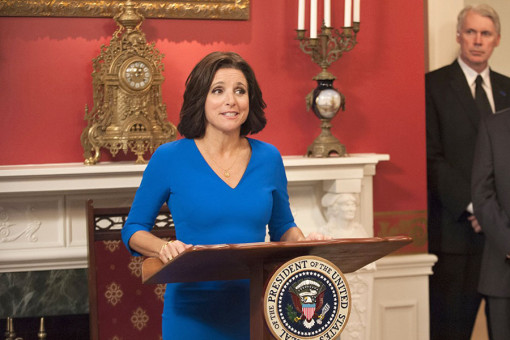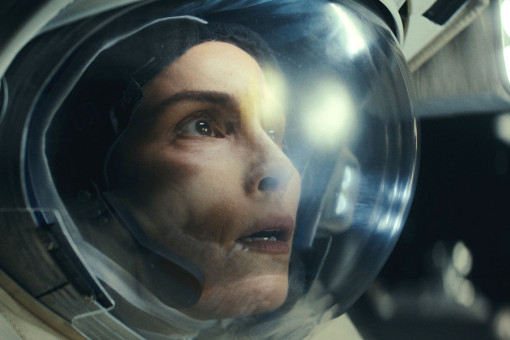Recreating a bygone era is a challenge for any production. Turning a beloved period film into a TV series — one that honors the spirit of the original while telling a whole new story... now that's complicated.
That's why Will Graham and Abbi Jacobson — cocreators, executive producers and coshowrunners of Prime Video's A League of Their Own — and their production team based every creative decision on an estimated 2,000 pages of research about the real-life Rockford Peaches and what life was like in the 1940s for women, Blacks and the queer community. The result of their scrupulous work is now streaming as an eight-episode series.
"The movie is something people really love," Jacobson says of the 1992 film A League of Their Own, directed by Penny Marshall. "There was so much pressure to get [the series] right. Every writer and department head had access to all the information we found. Our writers were sent a little library of books to familiarize themselves with the different themes — baseball, World War II, geography, all of it."
One of their ringers, in terms of research, was former Peoria Redwings player Maybelle Blair, age ninety-five, who provided details only the former players would know — from how they dressed off the field to what happened when a game was postponed or rained out.
"We got as many real-life stories as we could," says Jacobson, who also stars as Peaches catcher Carson Shaw. "Obviously, this is not a biopic. All the characters are inspired by real people, but we took liberties. It's a fictionalized version, but we wanted to get it as accurate as possible."
Historian and author Kat Williams, president of the International Women's Baseball Center, which is based in the Peaches' hometown of Rockford, Illinois, was another key player.
"They wanted to know what life was like," Williams says of the production team. "They wanted to show real issues like race and segregation and the fact that many of these women were in relationships with one another, or with other women. We talked a lot about cultural history in general and within the [All-American Girls' Professional Baseball] League. As a professional historian, I'm glad they were picky about details. It drives me nuts to watch a historically based movie or show that's not well-grounded in actual history."
In regard to race, "We wanted to know what it was like to be a white person in Rockford and what it was like to be a Black person," Jacobson says. "We talked to as many people as we could about the differences between those communities in 1943."
Though the series filmed in Pittsburgh, blink-and-you-missed-it details culled from that copious research — a sign for the Booker T. Washington Center; the masthead of the daily paper, the Morning Star; the marquee of the Coronado theater; a lighted sign reading "The Office" at an underground gay bar — brought Rockford to life.
"We got to re-create a great period," says production designer Victoria Paul, "and I got to meet a couple of the original players, which was amazing. We got a trove of information from them, too, which we used. They told us they used to play cards in the bus and gamble on the way to their games. They would stack up the luggage for a table and use matches for chips."
For costume designer Trayce Field, nailing the color of the Peaches' uniforms proved tricky.
"Some of the research showed different tones, like a different underlay of color," Field explains. "That's why they sometimes look a little white or a little pink, sometimes dusty rose. We had an actual Peaches uniform sent to us from a museum, as well as a practice jacket, so we had something to match. We dyed a few samples until we got it right. I really enjoyed the process — I wanted it to be as period-accurate as possible."
The production team "wanted everything to be authentic," Williams adds, "down to the buses the team rode on."
Since the real stadium was within walking distance of a college campus, Paul wanted the Peaches' residence to look like an old, lived-in fraternity house. The home of newlywed Clance Morgan (Gbemisola Ikumelo), is newer and crisper, but not as well-built, reflecting the differences between Black and white housing of the era.
And clothing helped define the characters, from the feminine lines and bold colors of the team's glamour girl, Greta (D'Arcy Carden), to the more masculine styles worn by Jess (Kelly McCormack) and Lupe (Roberta Colindrez).
A key friendship is that of Jacobson's Carson and aspiring pitcher Maxine "Max" Chapman (Chanté Adams), and their garments evolve as they learn more about who they are and who they want to be. The wardrobe of a less prominent character, Bertie (Lea Robinson) — who was born female but identifies male — took yet more research.
"Finding the right silhouettes for 1943 was important," Field says. "Bertie is a tailor, so the clothes needed to fit and have some style. Accessorizing Bertie — having the right tie pin or a cool watch chain, even their shoes — was about bringing all the right elements together."
Perhaps the biggest challenge, though, was replicating Beyer Stadium, where the Peaches played from 1943 to '54 (it has since been restored and is home to the Rockford Starfires Women's Hardball/Baseball League). For the series, the facility was built from scratch outside Pittsburgh; it had to look timeworn but still be usable.
"It's a real stadium — over 300 feet to the centerfield line," Paul says. Because it was built on a lot owned by a community college, the school wanted to use it, too. Crewmembers spent weeks sanding and aging the wood to achieve a weathered-looking grandstand that could be shot from any angle.
"The details were terrific," Paul says. "It had a press booth up at the top with ashtrays and cigars and cigarettes — perhaps even a couple bottles of whisky and some highball glasses."
The original movie — which starred Tom Hanks, Madonna, Geena Davis and Rosie O'Donnell (the latter appears in one episode of the series) — means so much to Jacobson that she felt awestruck while shooting baseball scenes. "To be squatting down behind home plate as the catcher of the Peaches, I was like, 'What's going on? How did I get here?' My ten-year-old self would not understand what was happening."
WHEN THEY BUILD IT, FANS WILL COME
Rockford, Illinois, is not only the hometown of the Peaches — it's also home to the International Women's Baseball Center (IWBC), founded in 2016.
When IWBC was offered a property on Seminary Street, across from the Peaches' restored Beyer Stadium, the organization knew it was a perfect site to build their international facility.
"Whether you're focused on the full history of women's baseball, or just on the All-American Girls Professional Baseball League, Rockford is the center — which is why we made it the home of girls' and women's baseball," says sports history professor, author and IWBC president Kat Williams, who serves as an advisor on A League of Their Own, the new series from Amazon Studios and Sony Pictures Television.
"There is a museum element to it, but this is about education," Williams says. "It's about telling the long history of girls and women in all aspects of the game — playing, coaching, umpiring, tending the fields, owning the teams, keeping the stats. Women have been part of the game since the beginning."
To bolster fundraising efforts, IWBC launched sports apparel and makeup lines, with all profits going directly to the center. Its Rockford-based SPoRT Makeup created the Rockford Peaches Red lipstick the players wear on the show (it's available online).
Williams hopes the new series — and the thirtieth anniversary of the film of the same name — will help raise awareness of the IWBC's mission and also help raise funds to complete construction of the center. —P.H
Read about the history of the Rockford Peaches here.
This article originally appeared in emmy magazine issue #8, 2022, under the title, "The Other Kind of Legwork."











